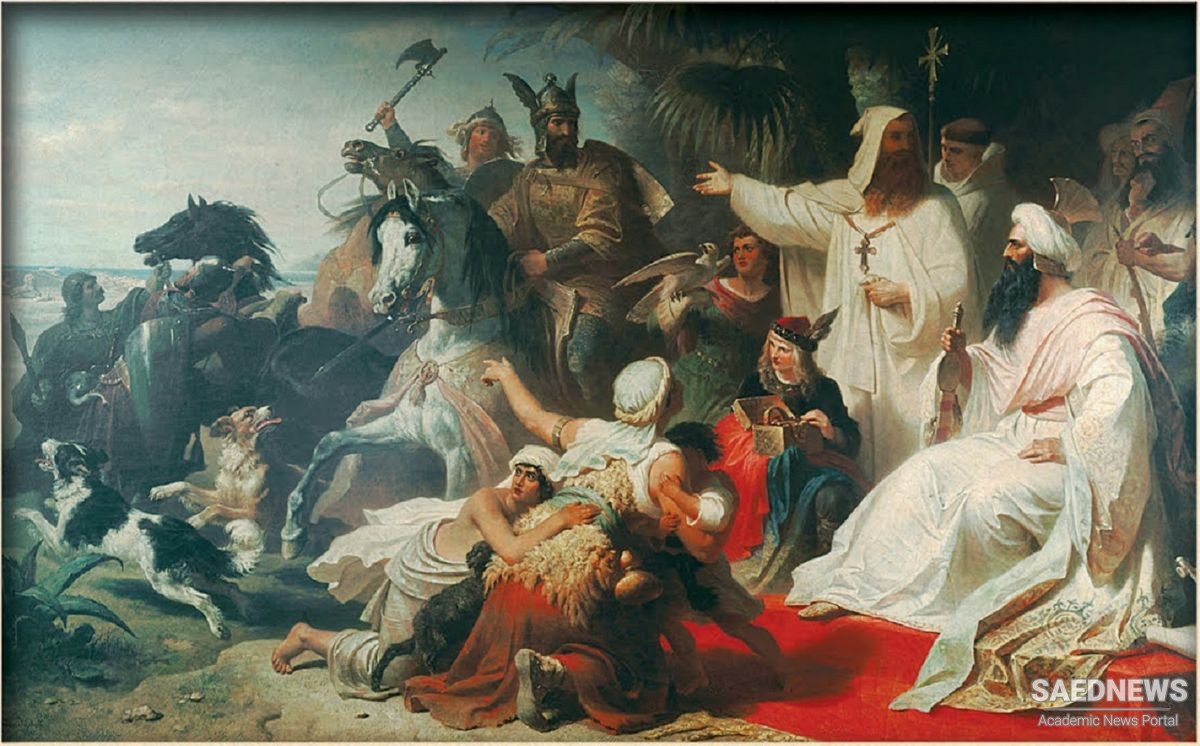With Harun al-Rashid’s coming to power, the period of respite for the Christians ended.The new Caliph reintroduced the discriminatory measures against the dhimmis. The war against Byzantium has been argued to be the main cause of al-Rashid’s decision, as the Christians had once again become suspicious in the eyes of the rulers. The result was further defections from non-Muslim faiths. Timothy, who was still in office during that period, had the support of al-Rashid’s mother, al-Khayzarun. Timothy had either to appeal to her to appease the Caliph’s antagonism towards the Christians or to the court’s physician, Bokhtisho, who then became al-Rashid’s private physician after an ‘impressive diagnosis’. He was able to secure the position of al-Rashid’s physician for his son Gabriel, who went on to become a valuable asset for the Christians. On several occasions, he approached Harun al-Rashid on behalf of his co-religionists in order to conciliate him with his community and have the discriminatory laws abolished.
The intervention of these highly influential Christians, although useful, was not always sufficient in eliminating all the obstacles encountered by their community. The pressures put on the Christians during the first half of Harun al-Rashid’s reign had reduced their number,and as a result, Timothy was no longer able to build new parishes. In 795, the Catholicos nominated Serge as the bishop of Elam, hoping that he would be able to preserve the Christian Church in Iran, but Serge was not able to find priests. In Fars, Timothy and Serge faced the disobedience of many bishops who, according to Timothy, were following the laws of Zarathushtra and the customs of pagans (i.e. Muslims). Securing the support of the Caliph, he compelled them to yield to his requirements. Nonetheless, Bar Hebraeus testifies that in his time the Christians of Fars were still reactionary and that their behaviour was more Zoroastrian than Christian. They believed themselves to have been converted by the apostle Thomas in person and because of this felt entitled to disregard the authority of the Catholicos of Baghdad. Their clergy married, ate meat and wore white clothes similar to those of Zoroastrian priests.
These dissensions between the patriarch and the Christians of Elam and Fars demonstrate the vulnerable position of the Christians in Iran. With the death of Timothy, the power of the Nestorian Church waned even more. The seats of Daylam and Gilan did not survive his death.214 The disturbances in the 9th century prompted a large number of Christian Iranians to leave Iran for India. Documents written in Pahlavi and Arabic have been found in the south of India dating from 824, granting some rights to these new settlers. The behaviour and customs of the Christians of Fars betray their Zoroastrian background. Moreover, the migration of Iranian Christians to India suggests that they were affected as much as the Zoroastrians by the massive conversions to Islam after the defeat of the Iranian uprisings in the 9th century.


 Byzantines, Sassanids and Arrival of Islam to Middle East
Byzantines, Sassanids and Arrival of Islam to Middle East














































